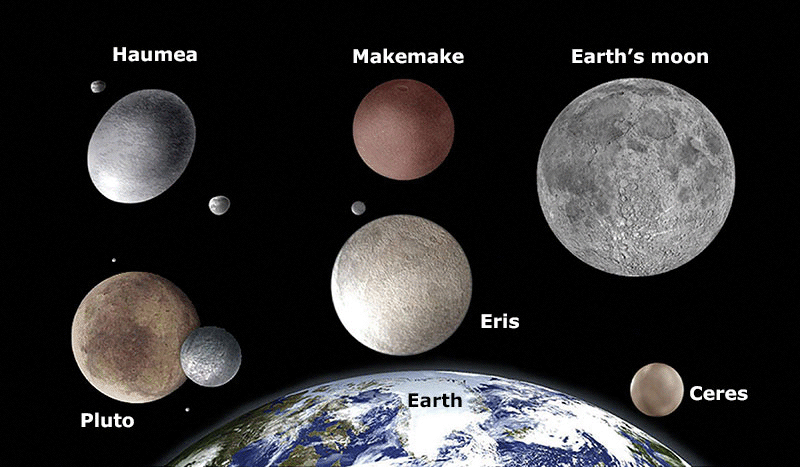Pluto Gets Its Revenge
Nov. 2, 2011
The dwarf planet Eris, whose discovery in 2005 contributed to Pluto’s demotion from planet to dwarf planet, is actually a bit smaller than Pluto, new observations suggest. Discovered in 1930, Pluto was widely considered a full-fledged planet, until scientists found Eris. At first, it seemed that Eris, which appeared to be slightly larger than Pluto, might become the 10th planet. Instead, the possibility that astronomers might find many more objects about the size of Pluto and Eris led to a scientific debate about the definition of a planet. In 2006, the International Astronomical Union, the body in charge of naming objects in space, created a formal definition for a planet as well as a new category of objects called dwarf planet for Eris and Pluto.
Eris, Pluto, and two other dwarf planets, called Makemake and Haumea, are found in the Kuiper belt, the area of the solar system immediately beyond the orbit of Neptune. A fifth dwarf planet called Ceres is the largest member of the Main Belt, a region of asteroids between the orbits of Mars and Jupiter. The new observations indicate that Eris is less than 1,454 miles (2,340 kilometers) in diameter. Pluto is about 1,455 miles (2,342 kilometers) wide. All the dwarf planets are smaller than Earth’s moon. Some scientists think there may be thousands of dwarf planets in the solar system.

This illustration shows the dwarf planets Ceres, Eris, Haumea, Makemake, and Pluto and their moons in comparative size to Earth and the moon. UCAR/University of Michigan.
Despite their similar size, Eris and Pluto are remarkably different. Eris is much denser and shinier than Pluto. In fact, Eris is one of the brightest objects in the solar system. Scientists think Eris may be so shiny because of methane ice on its surface.
Additional World Book articles:
- Back in Time (Astronomy, 1930)
- Back in Time (Astronomy, 2005)
- Exploring the Suburban Solar System (special report)
- Tombaugh, Clyde William


